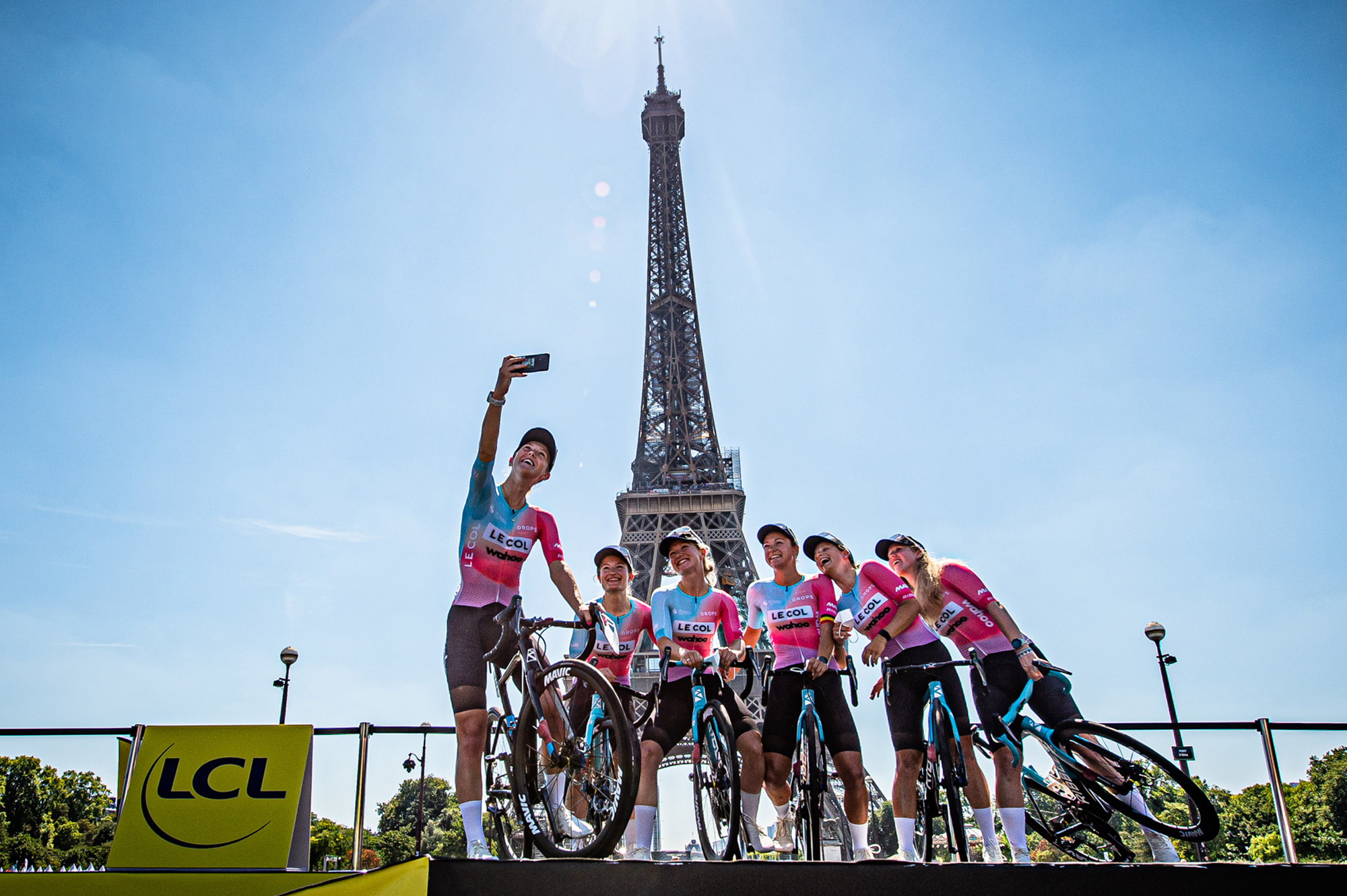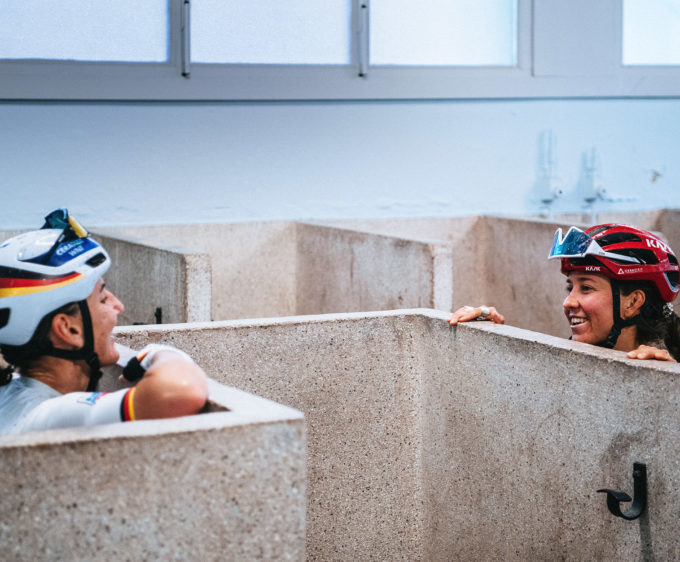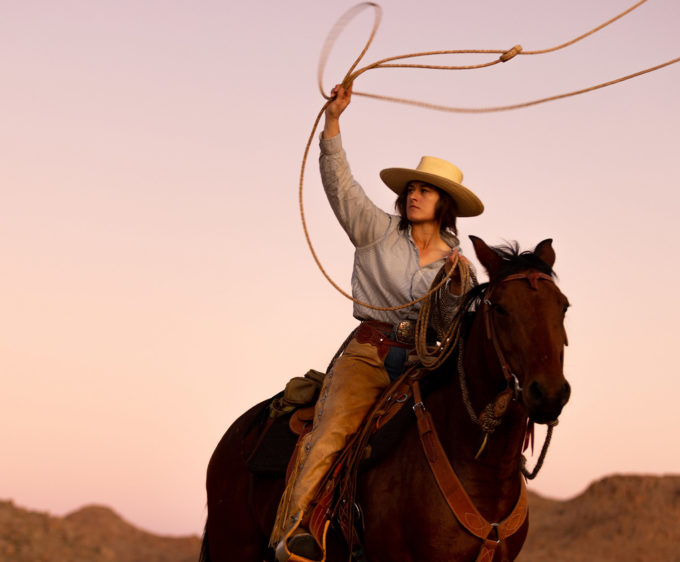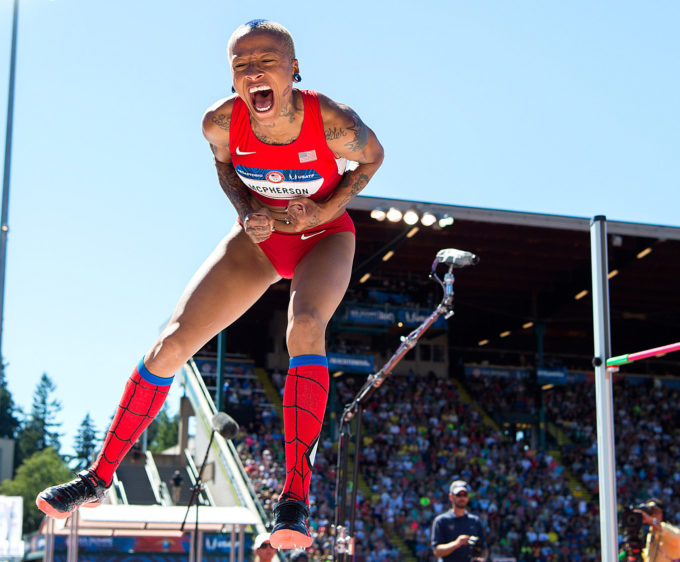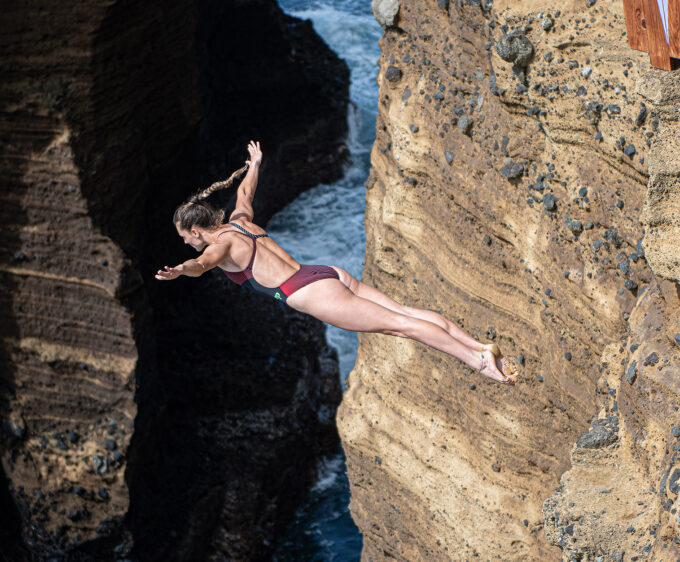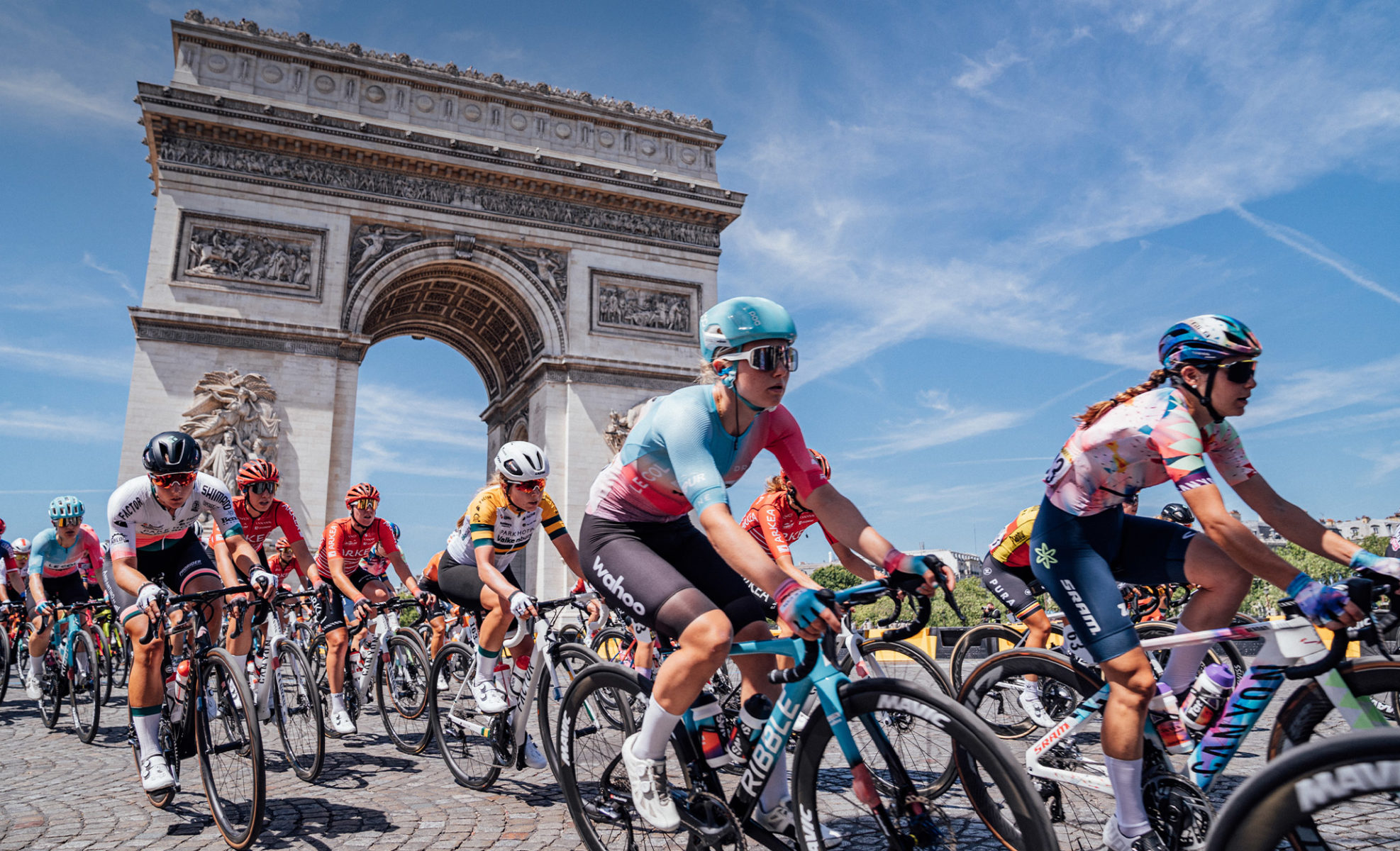
Behind The Scenes Of Tour De France Femmes
Amy Sedghi joins British cycling team Le Col-Wahoo to discover what it takes to compete at the highest level in the iconic Tour de France Femmes race
By Amy Sedghi
Photography by Zac Williams, Arne Mill & Amy Sedghi
When the women’s pro peloton last swept through the French countryside in an iteration of the famed men’s Tour de France, Le Col-Wahoo rider Lizzie Holden wasn’t even born. In fact, most of the female riders lining up beneath the shadow of the Eiffel tower last month, ready for the inaugural Tour de France Femmes Avec Zwift, hadn’t seen a women’s version of the iconic race in their lifetime. The last attempt at a multi-day women’s tour was more than 30 years ago and to put it into context, 26.4 years-old was the average age of the female cyclists on the start list for the 2022 event.
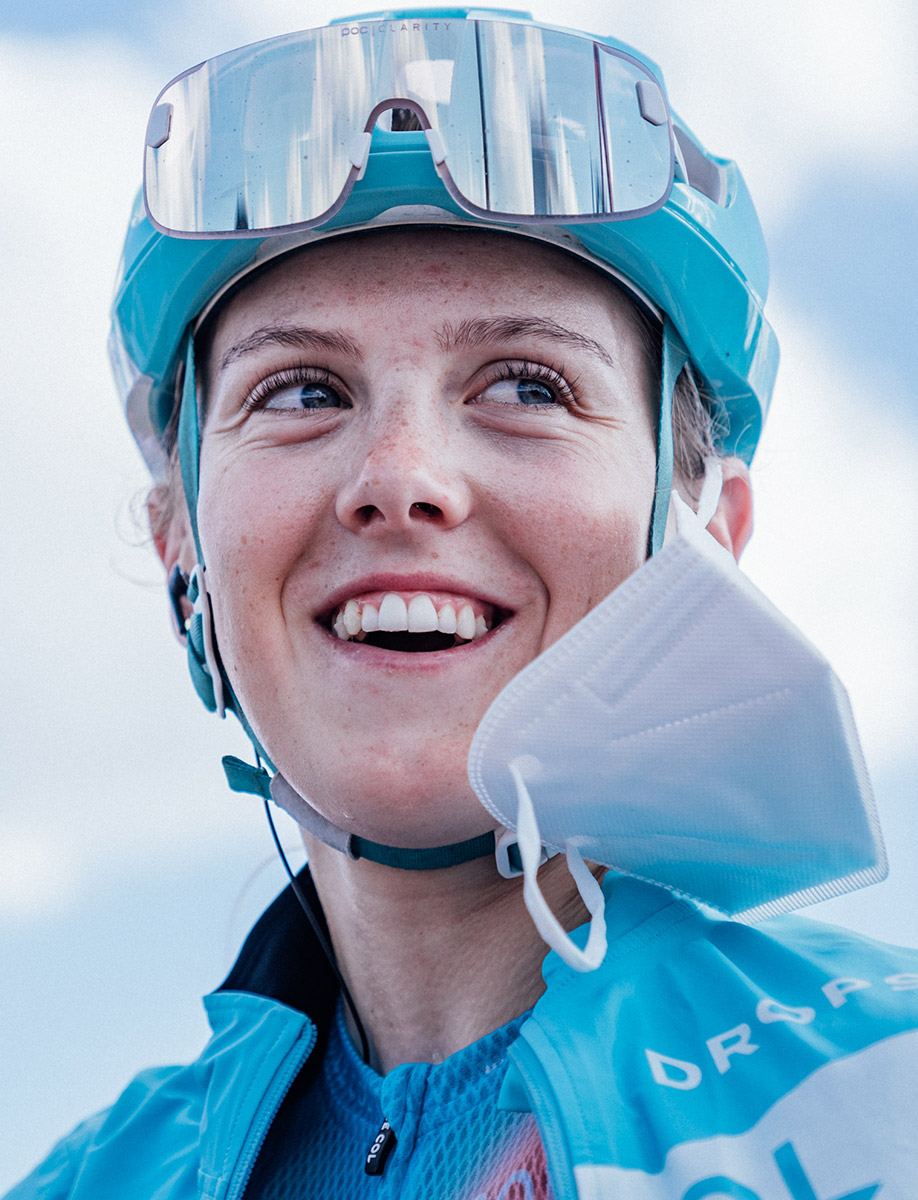
Sure, there have been one-day races, such as La Course, often mocked as a tokenistic effort, but nothing quite like the eight-stage extravaganza that has been rolled out for the professional women’s cycling calendar this year. “It feels like another level,” describes Lizzie of the racing at the Tour de France Femmes (TdFF). The 24-year-old, who hails from the Isle of Man, is fresh from finishing stage five of the eight-day event, which in total will cover 1,029 kilometres from Paris and across the north-east of France. As she spins her legs on a turbo trainer to warm down and sips on a chilled can of Fanta, Lizzie excitedly describes the crowds that she’s seen coming out to support the race. “The crowds are honestly incredible. I just rode into the finish on my own, taking it easy and I got to time to really take in the crowd and I was smiling to myself,” she says with a big grin.
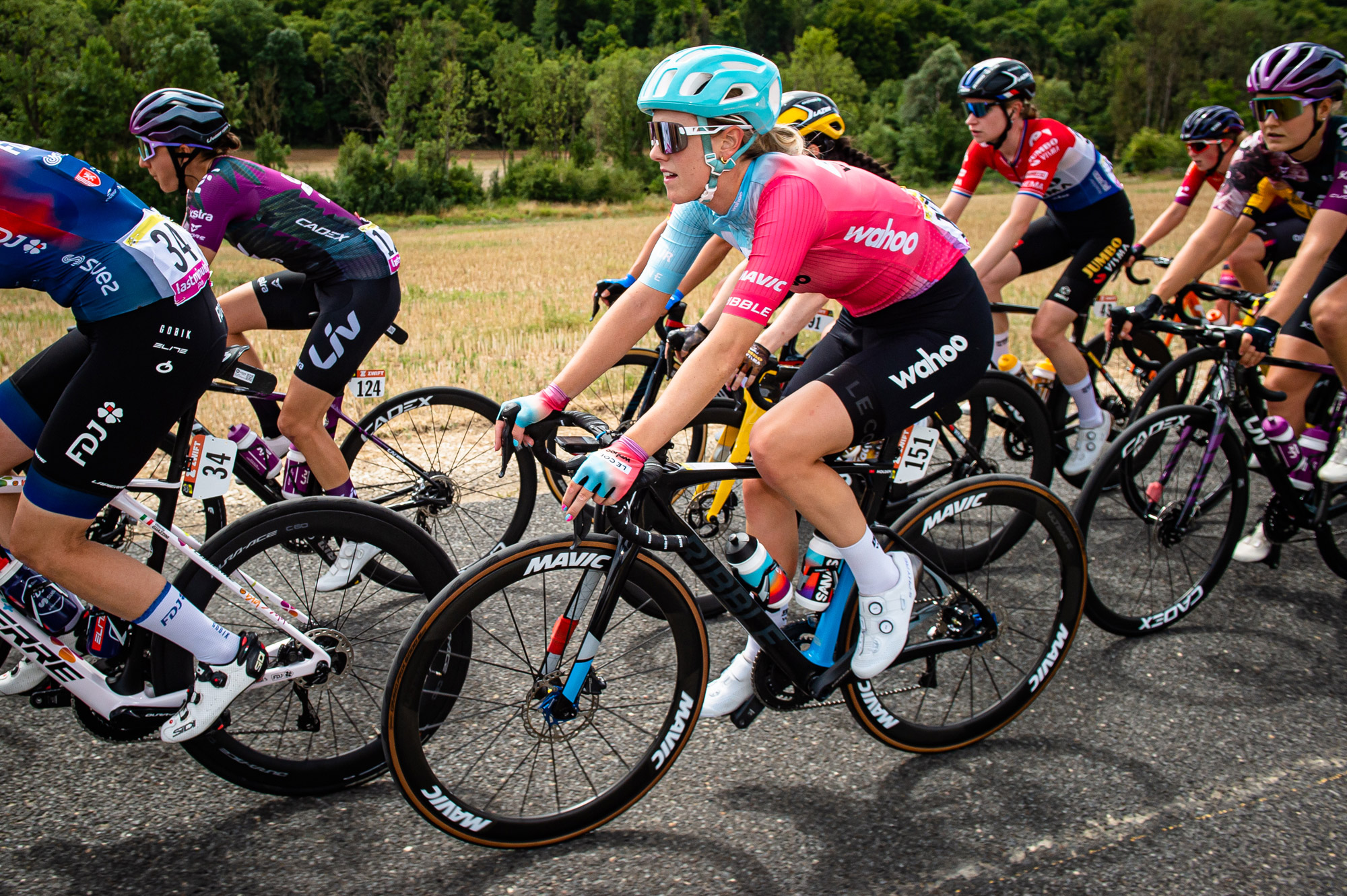
Growing up, Lizzie had to explain to her classmates, whenever they asked if she’d grow up to race in the iconic Tour de France, that it wasn’t possible as there wasn’t a women’s equivalent. Now, she’s witnessed the launch of the TdFF – aptly coming at a time when women’s sport has skyrocketed in coverage and popularity. Lizzie, along with her five fellow teammates is part of the only British cycling team, Le Col-Wahoo, in this year’s TdFF. Having been granted a wildcard, the small team has around a sixth of the budget of some of the biggest teams at the Tour. With impressive results for their riders and podium appearances already, the team is punching well above their weight, Tom Varney, Le Col Wahoo’s team manager tells me proudly.
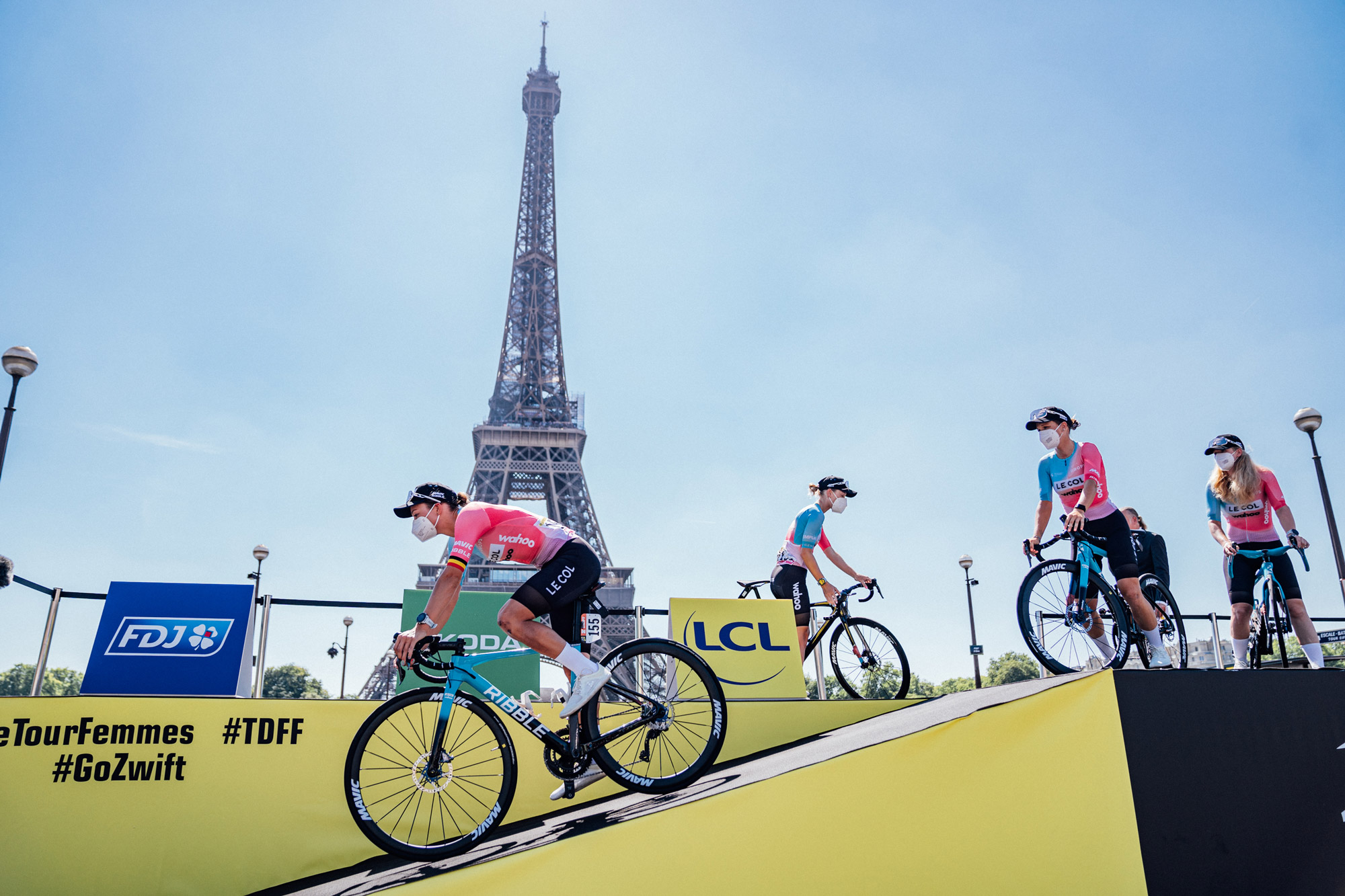
history

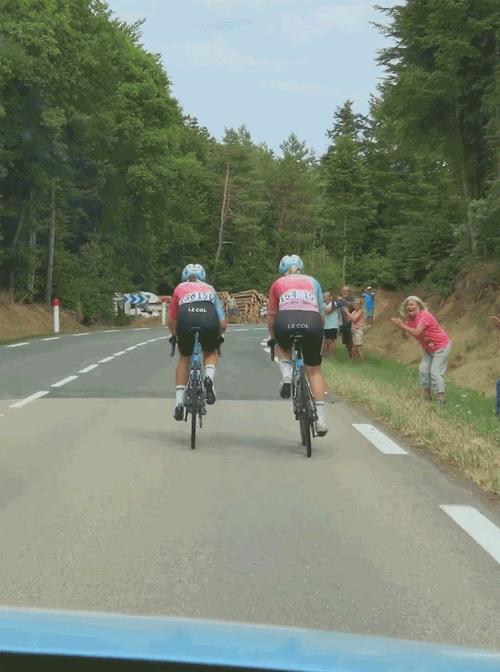
I’m part way through a day tailing the team and it’s been a whirlwind of organised chaos. To peek behind the scenes into the operation it takes for a team to race just one stage of the TdFF is to have your mind blown. There is a level of organisation like no other. When I join the riders and their directeur sportif, Nicolas ‘Nico’ Marche, in their team bus, there’s around an hour to go before the day’s 175km race kicks off. A discussion is ensuing about how the previous day’s stage went; what worked, what didn’t and how they can improve. Carefully wrapped snacks – with their flavours handwritten on stickers – sit on a counter near to me. Kinesiology tape and antiseptic creams are neatly lined up on a shelf above the door. Nicolas taps on a detailed map and elevation profile as he runs through the details of the coming day’s route. The riders are focused and throw questions and comments out.
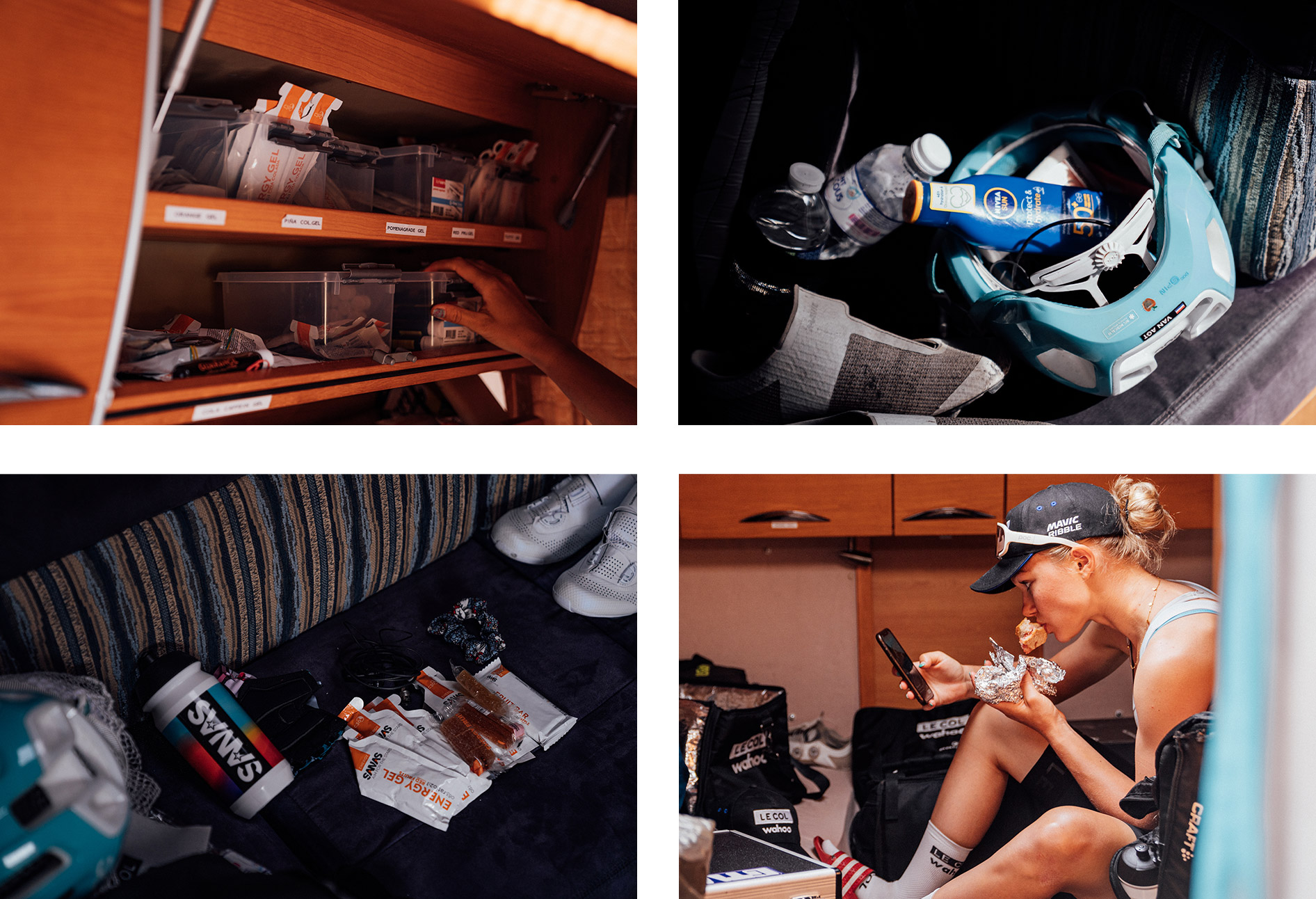
strategy
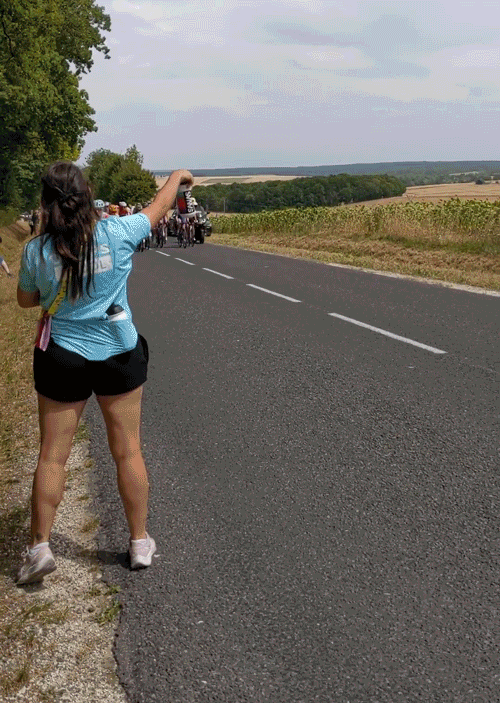
The day’s stage is the longest of all the routes over the eight days. In preparation for this, the team’s soigneurs, Bart Verholen and Caro Houdjakoff, have prepared 65 bottles for the six riders heading out into the exposed heat. At points in the day, the temperature will hit the high twenties, so having chilled water and isotonic drinks ready for the riders to grab – either at feeding points or from the team cars – is vital. In a quiet moment, as we wait by the roadside for the riders to come past, Bart gives me a glimpse into his backpack. It’s packed with neatly labelled boxes, every charging cable you could think of, a spare mobile phone (in case his gets damaged), a towel to wipe the water bottles down before handing them out (so they don’t slip out of the riders’ hands) and the strangest item: a pair of women’s 60 denier tights. “They’re for ice socks,” he tells me, demonstrating how to create one by shovelling in some ice, snipping the fabric and tying a knot in it to create a small sack. The riders place these on their necks in a bid to cool down, he explains.
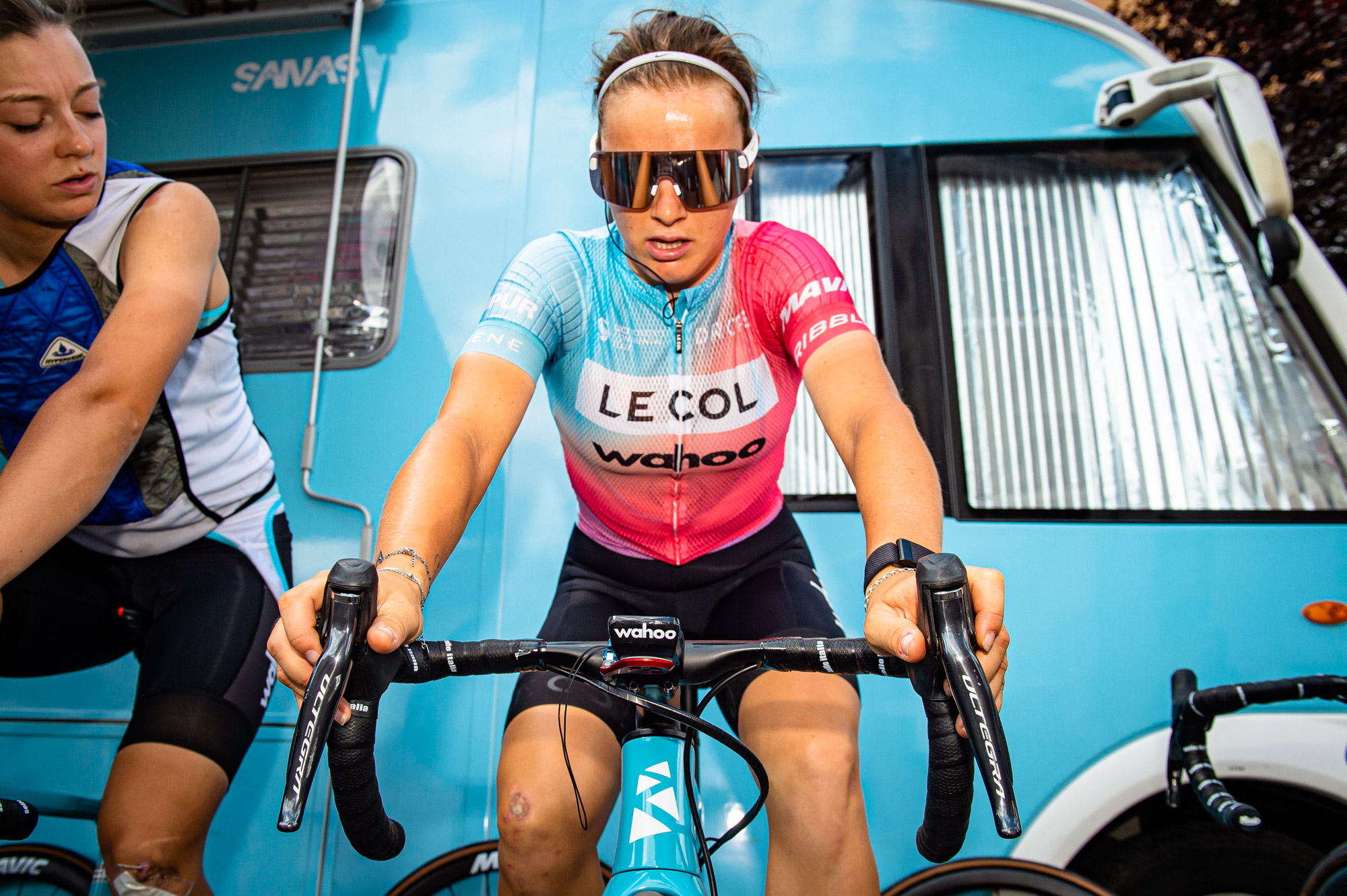
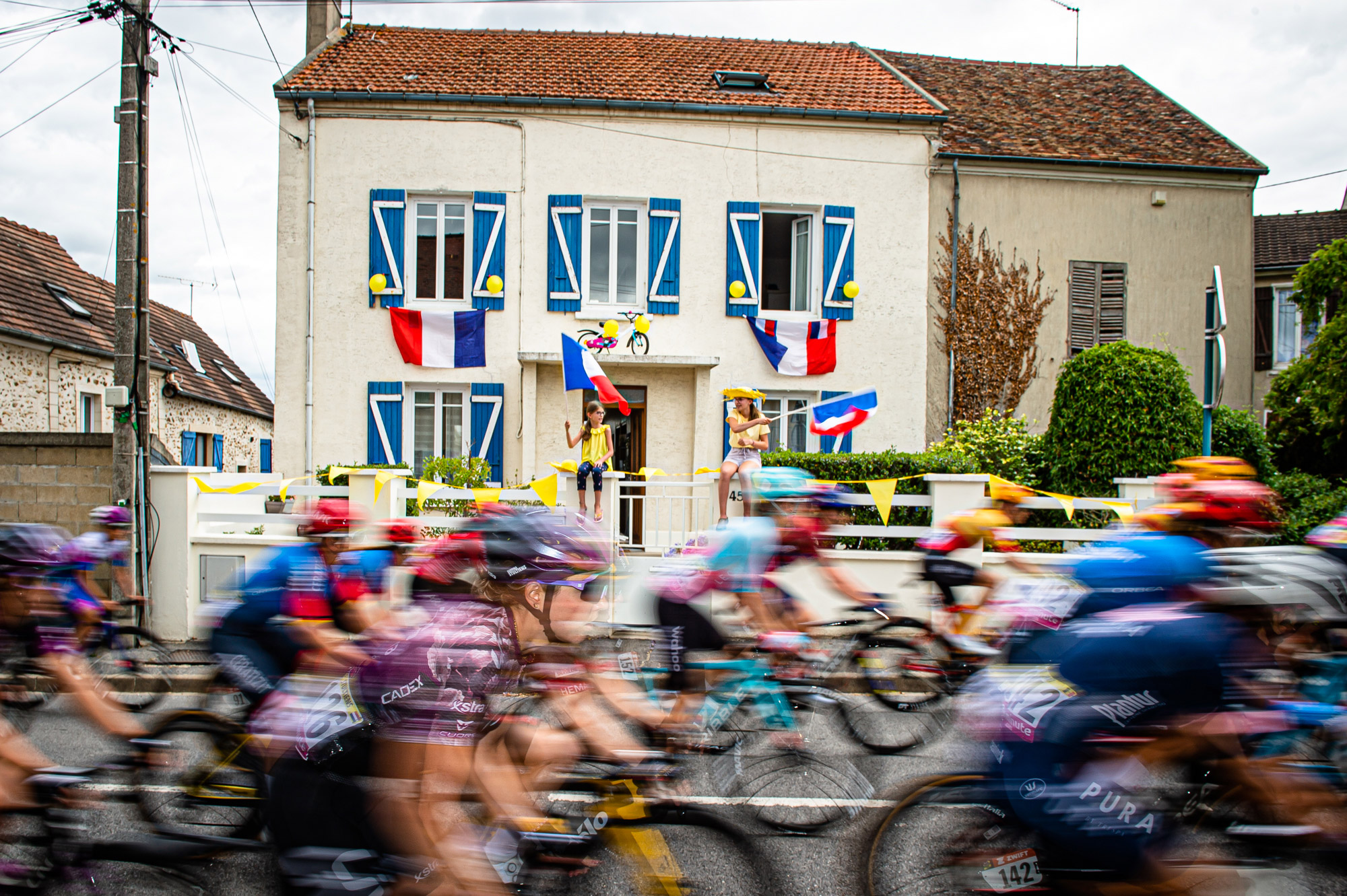
Relentless
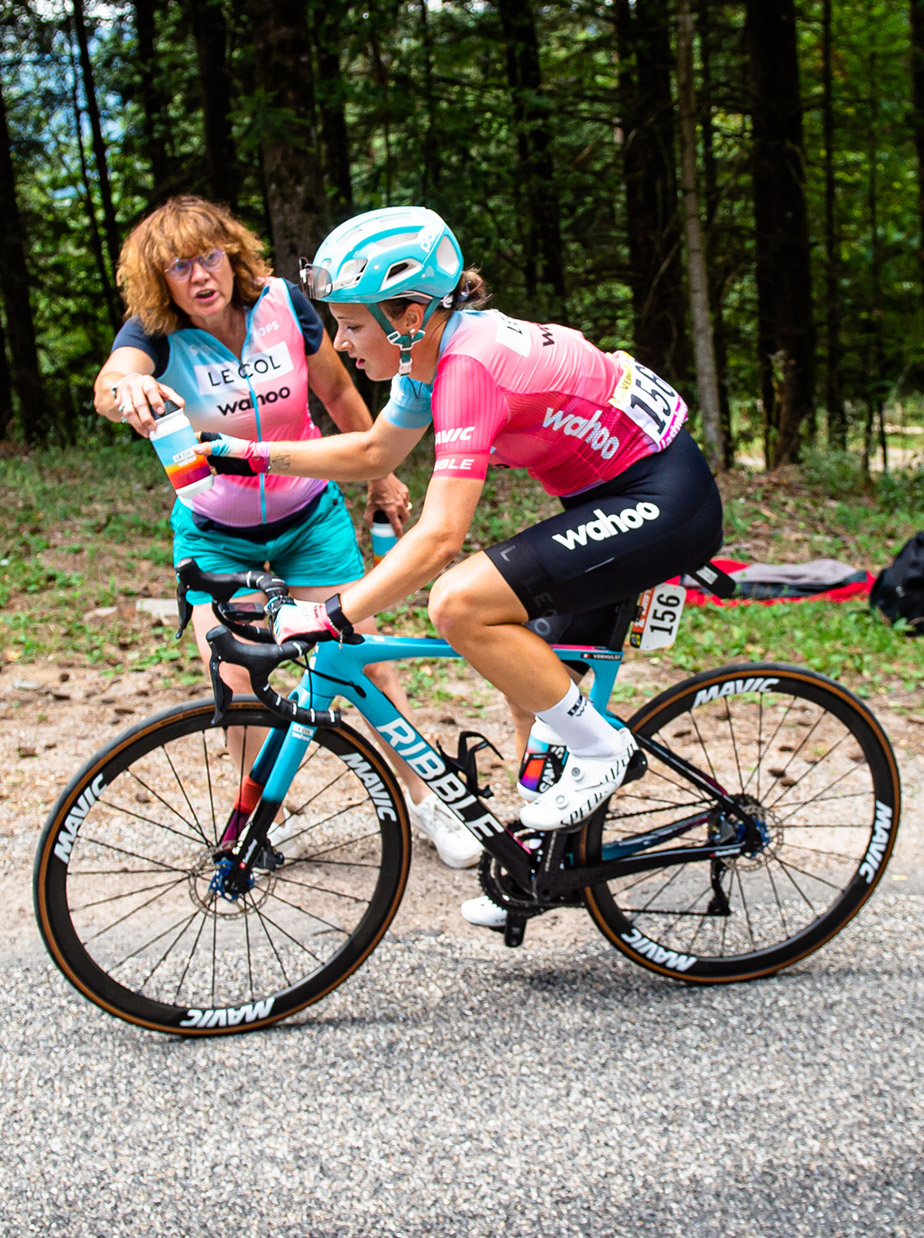
Elsewhere, one of the mechanics is busy transferring the team and crews’ belongings to the next hotel (there’s a lot of travel between stages for the teams on the Tour), while another rides in a team car delivering spare wheels and bikes to the riders in the event of any crashes, punctures or damage. Plates are spinning as the riders push on the pedals, eating up the kilometres. A message pings into Bart’s group chat; a couple of the team’s riders have suffered injuries in a large crash that took down a sizeable chunk of the peloton. We follow from a safe distance as the riders, Marjolein Van ‘t Geloof and Gladys Verhulst help each other get through the last 20km. Even with suspected broken bones, the pair pedal through villages, around sweeping descents and over the finish line at astounding speed.

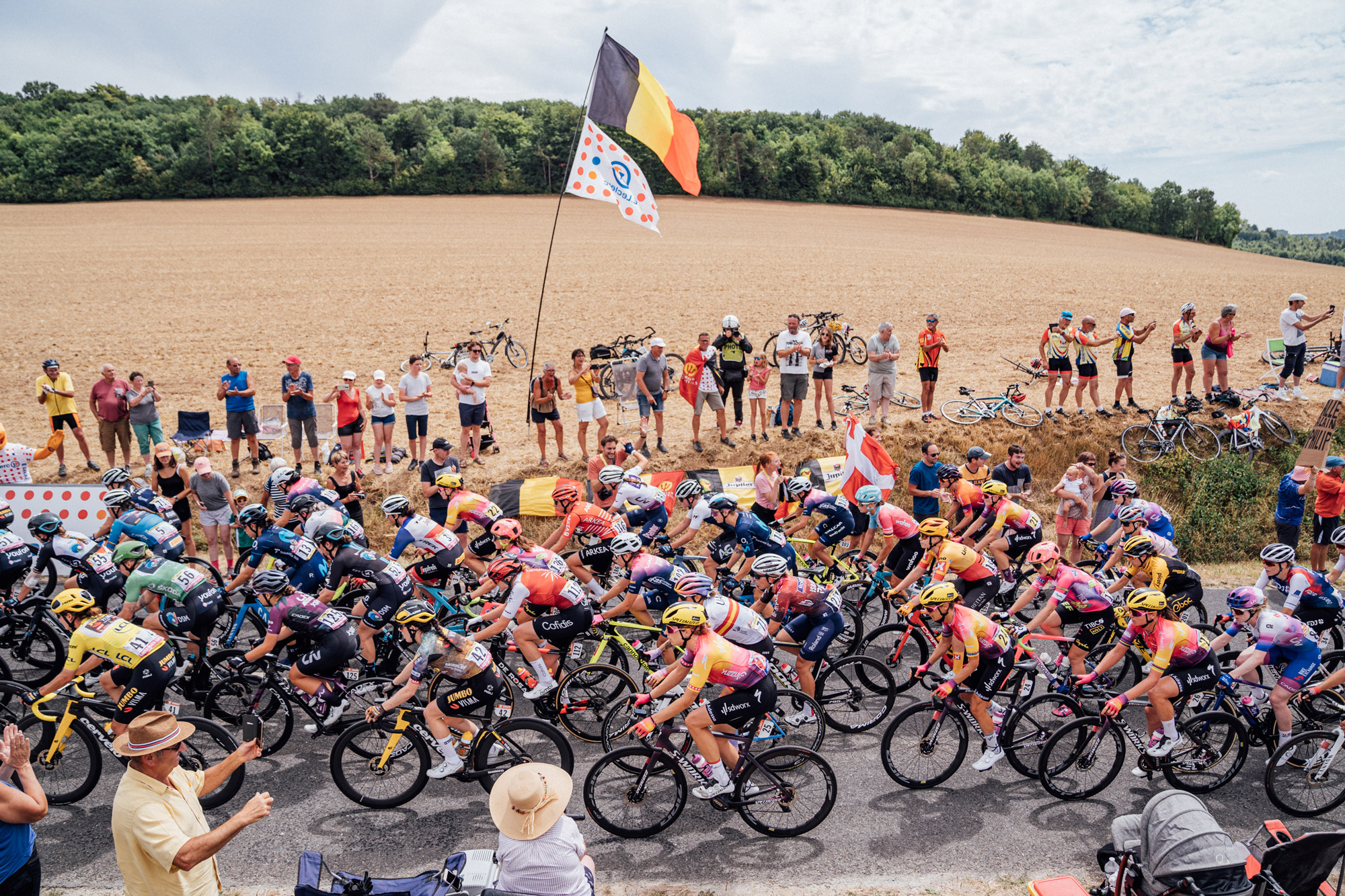
Later, I join Marjolein as she has her post-race massage. Lying on the bed she calmly discusses her thoughts around the TdFF, all whilst suffering from a fractured rib. Anyone familiar with cycling and the injuries the professionals sustain, will tell you pro cyclists are another breed in terms of pain threshold. “It’s really actually been a bit overwhelming I think for everyone to see how many people there are on the side of the roads. It’s really impressive. Every time we go to the start, we’re like ‘oh wow, there’s so many people here’.” Although the support on the streets has warmed her heart, she notes that there’s still some way to go in shifting attitudes generally.
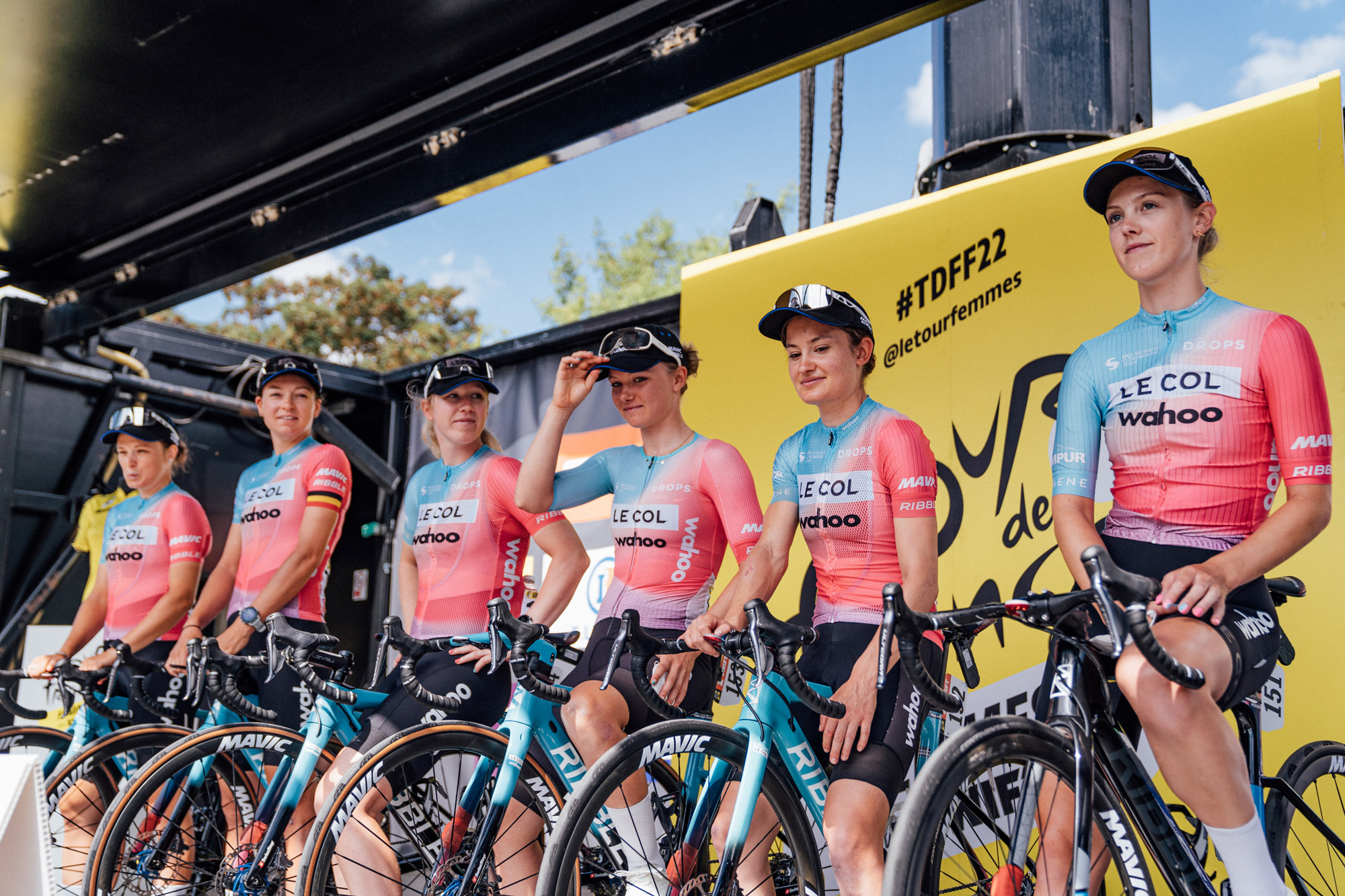

“I think [the TdFF) is a big step…but you already have a lot of people questioning ‘is this too big a step?’ and I’ve heard a few journalists also ask the girls ‘is women’s cycling ready for this?’”, she shares. “I think it really is, but people need to adjust the way they look at women’s cycling.” The importance of both men and women lending their support, voices and encouragement to an event like this cannot be overstated. With organisers and sponsors keeping an eye on the success of the race – in whichever way they measure that – it’s worth shouting about an event that puts women’s cycling on such a platform. As well as the pride and belief Tom and Nicolas have of their athletes, I’m struck by Bart’s passion for these riders and the event. He freelances as a soigneur for the team in his holiday from his full-time job and he brims over with pride when he watches the women race past us after grabbing their bottles at the feed station.

“From the rider’s point of view, I think they’re taking it in their stride,” states Tom, as he drives the twisting roads to the team’s hotel for the night after the stage ends. “I think they might not realise what they’ve raced until they get home.” Showered and changed, the riders are chilling whilst they wait their turn for massages and dinner. The mechanics are in the midst of the long process of cleaning and fixing all the bikes used that day – although pumping music is helping keep their morale up until they can collapse into the restaurant for a bite to eat and a well-earned beer. As the sun sets in the mountains, the riders head to bed and their team puts into place what’s needed for another day of racing, there is stillness in the camp. It’s a moment worth savouring after a day on the road at this most historic of races in women’s cycling. Tomorrow, no doubt, will bring more cowbells, crowds and furious racing. As Marjolein says, be in no doubt: the women’s peloton is ready for this.
